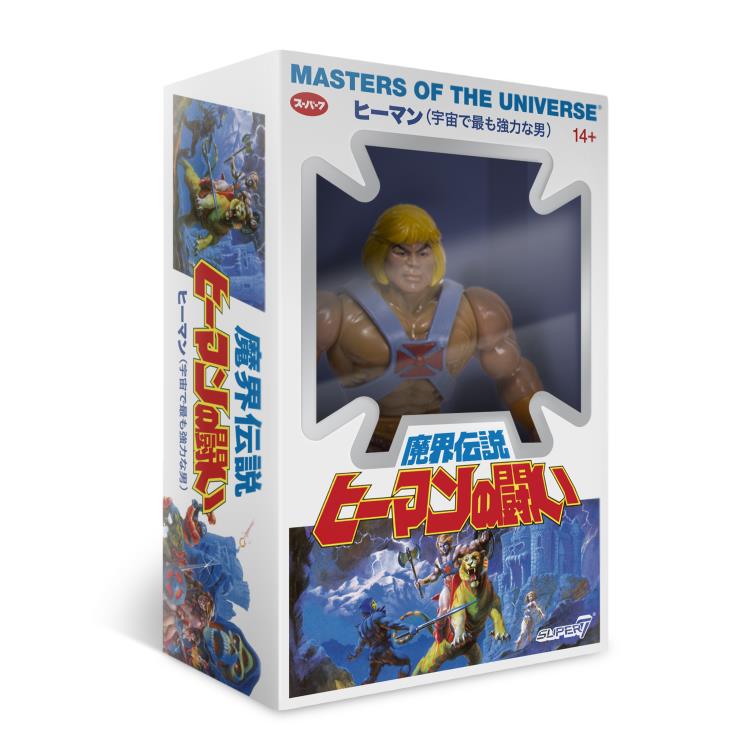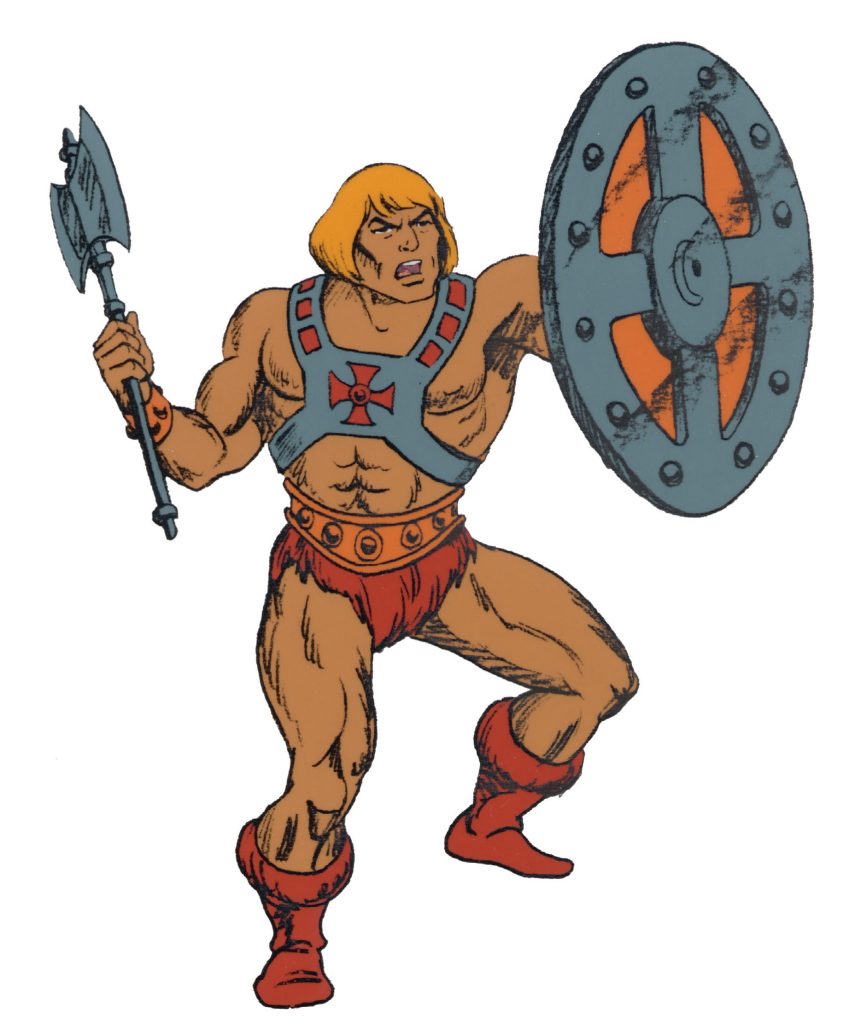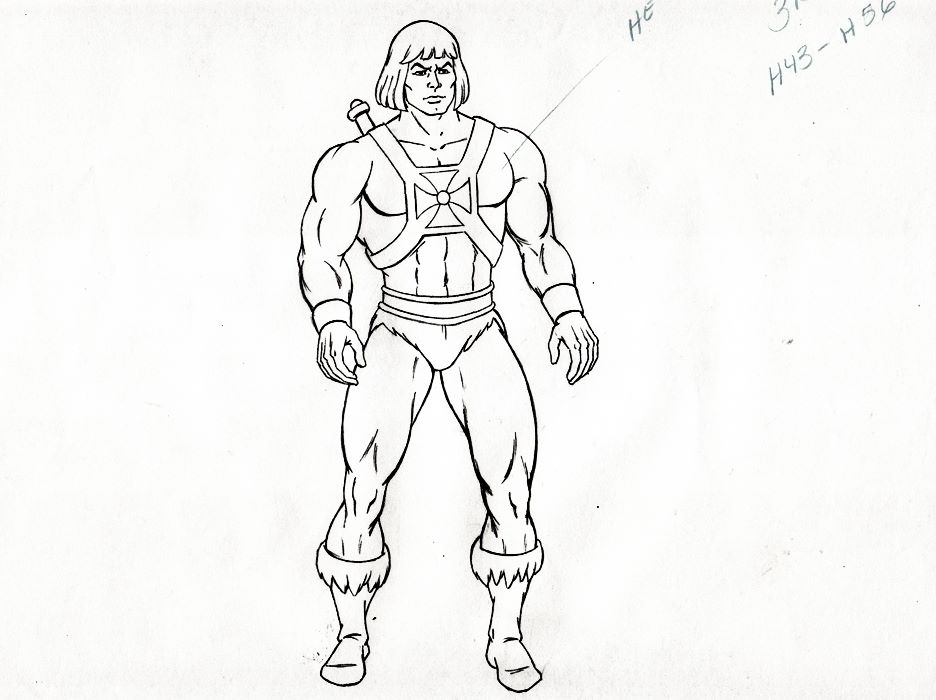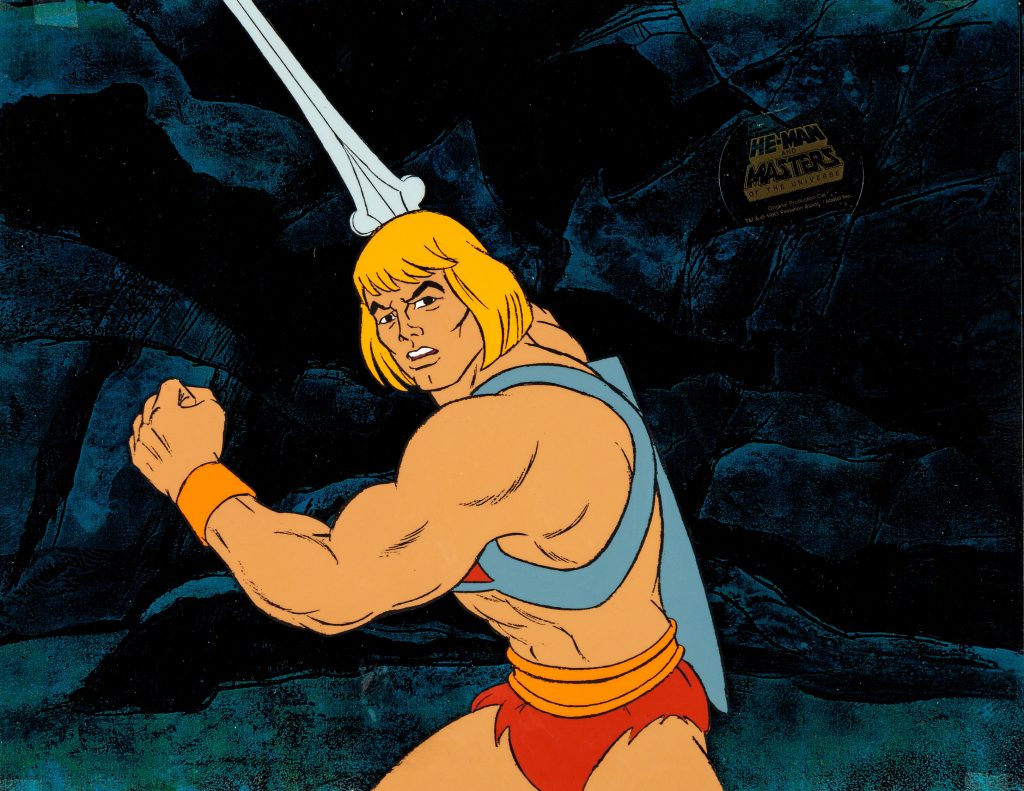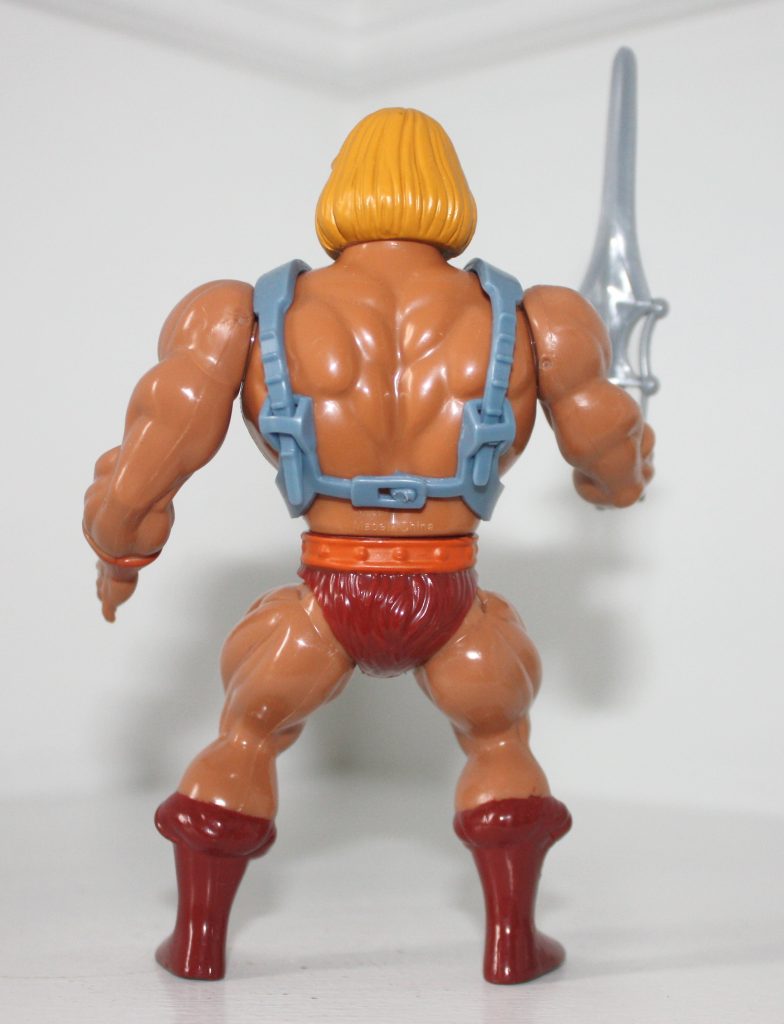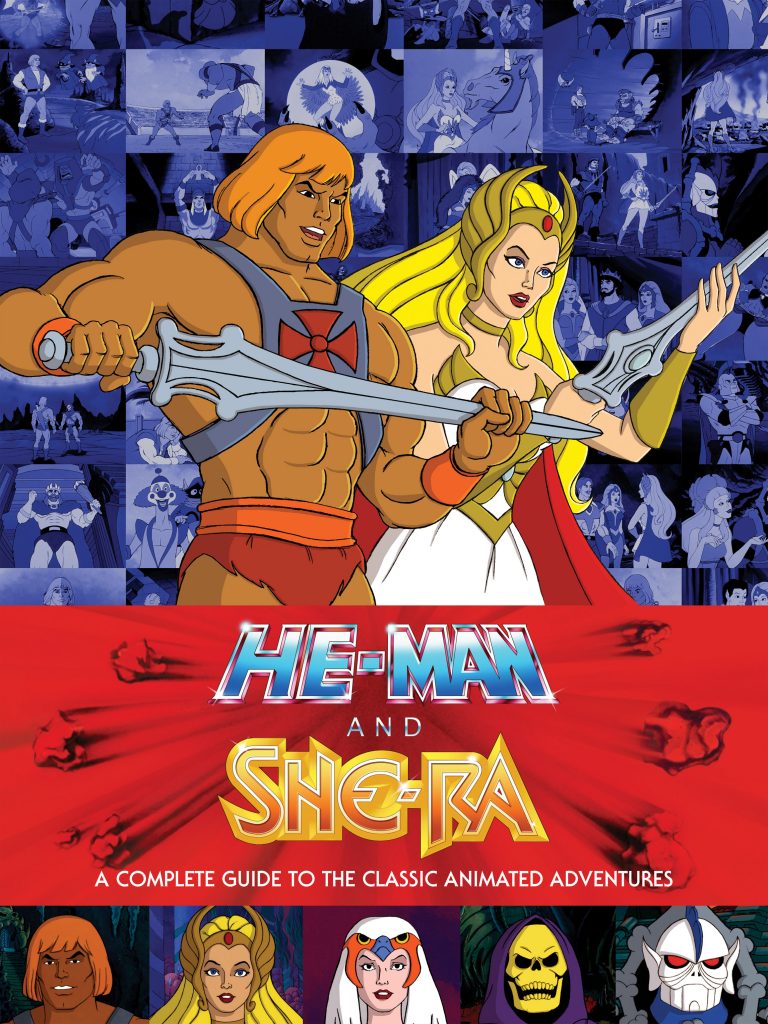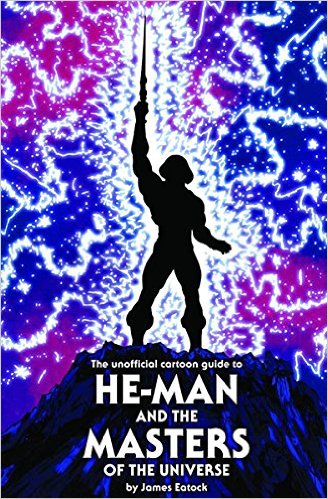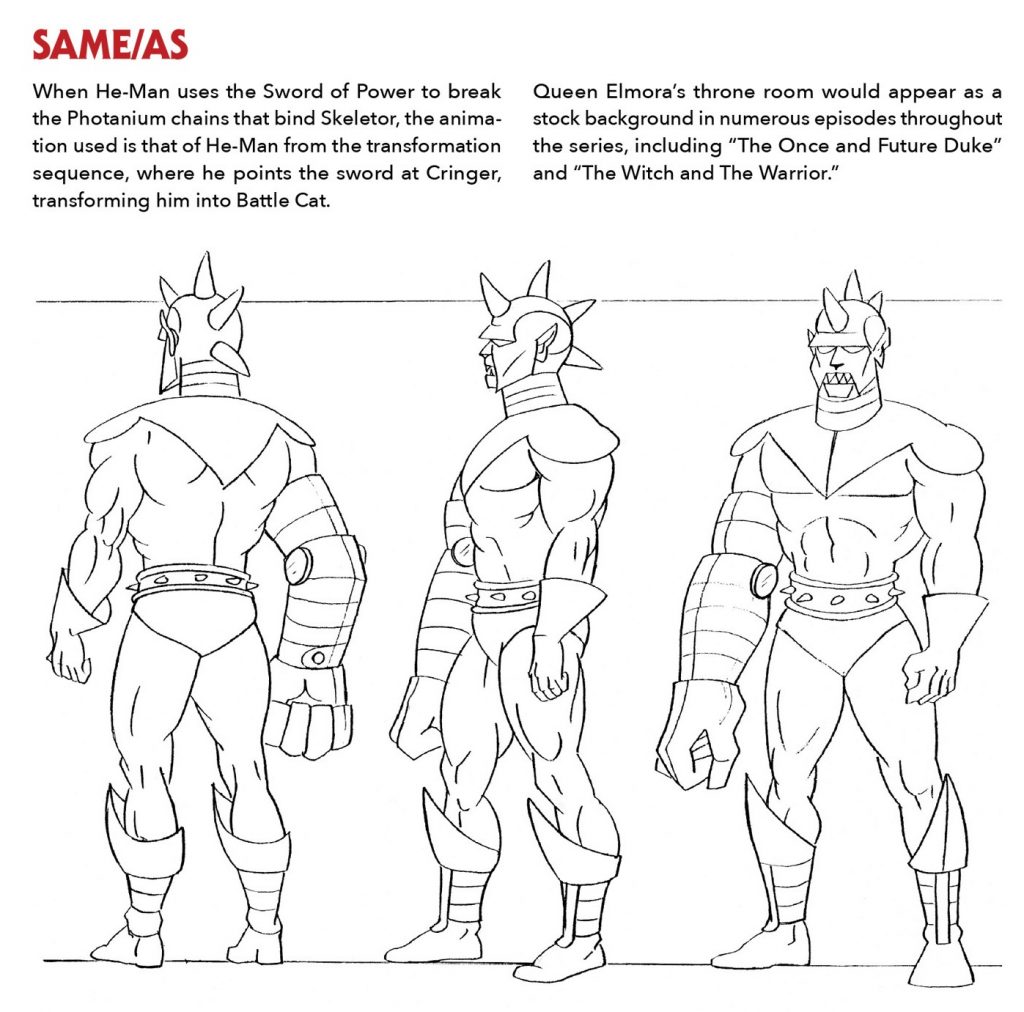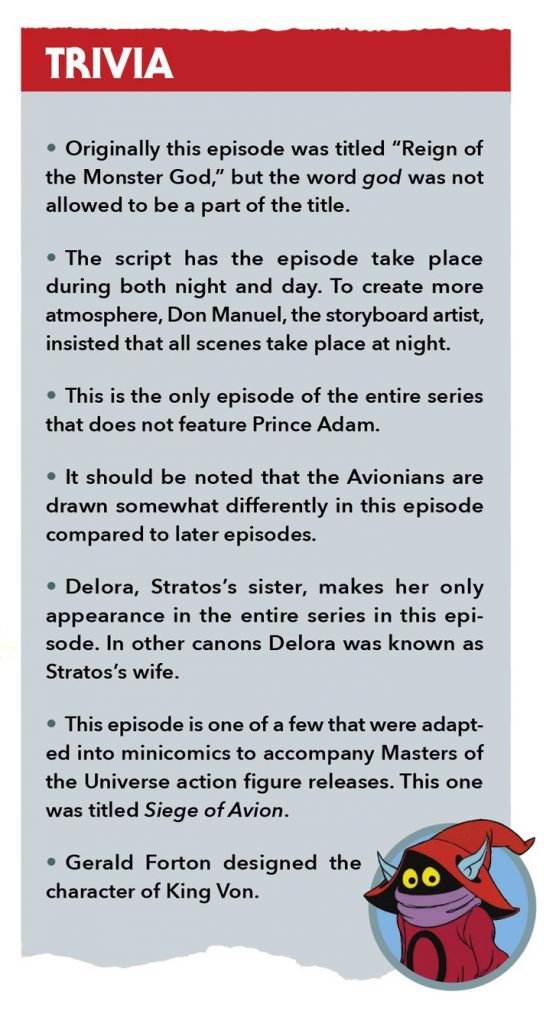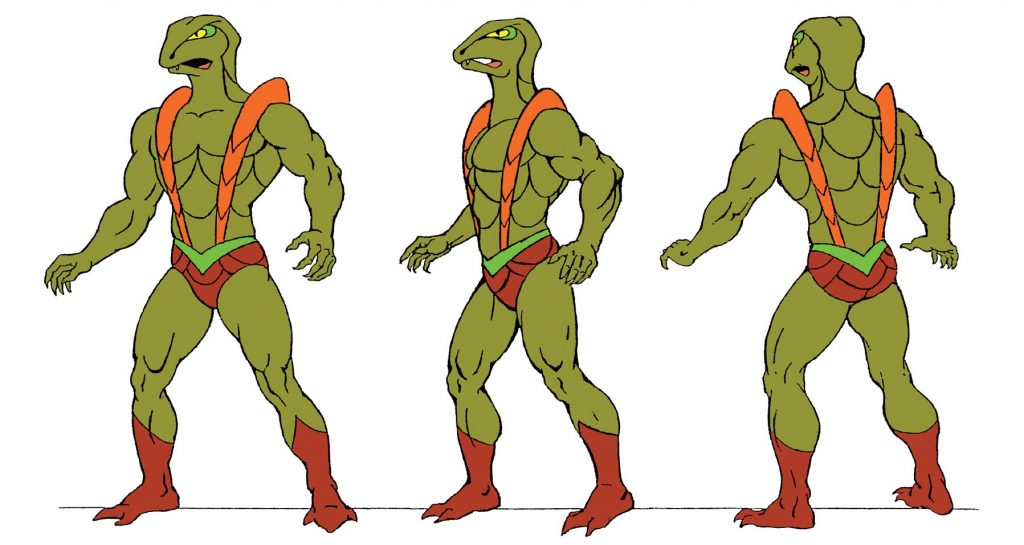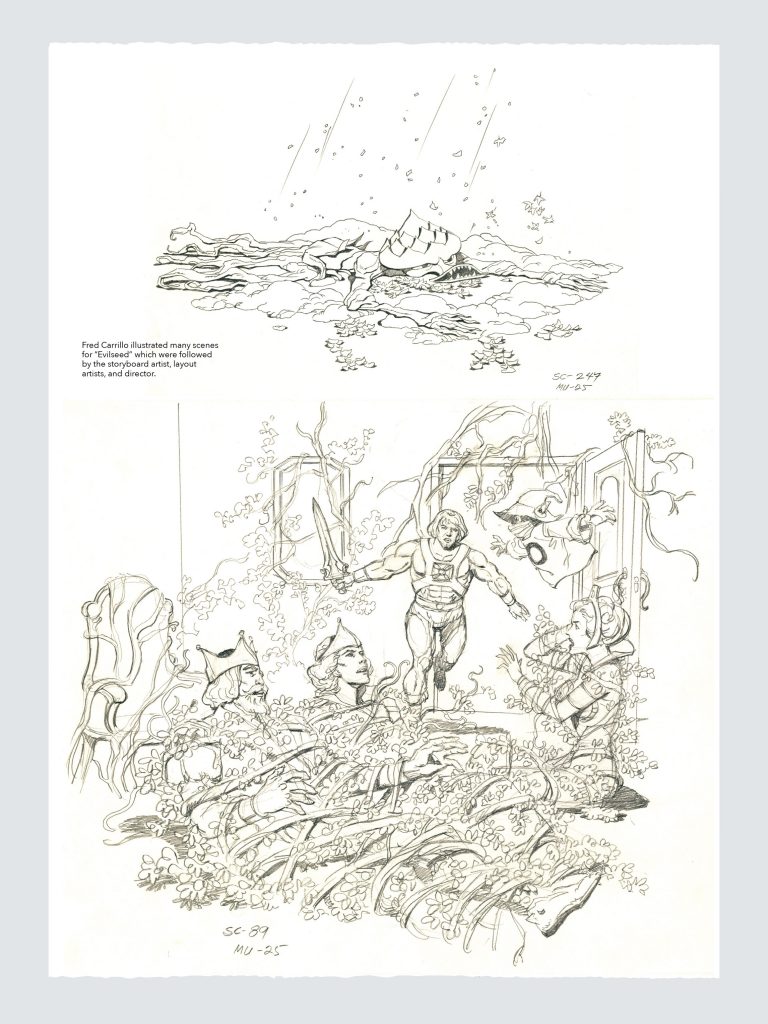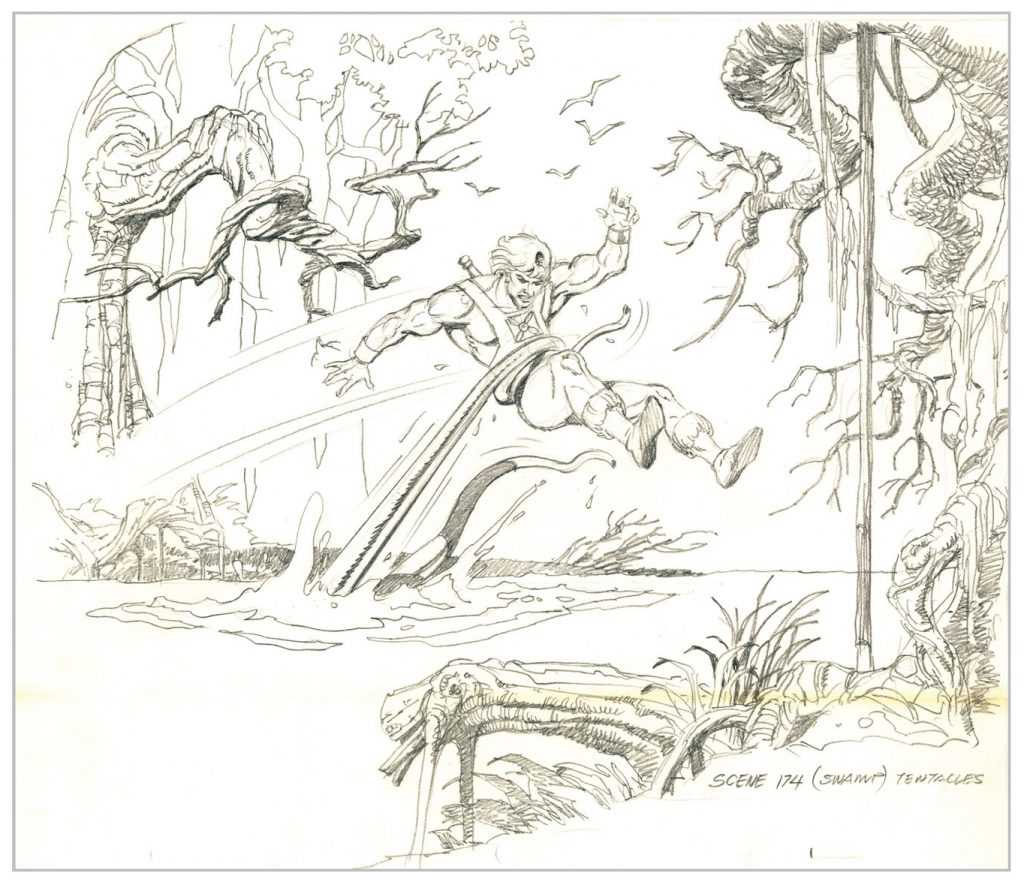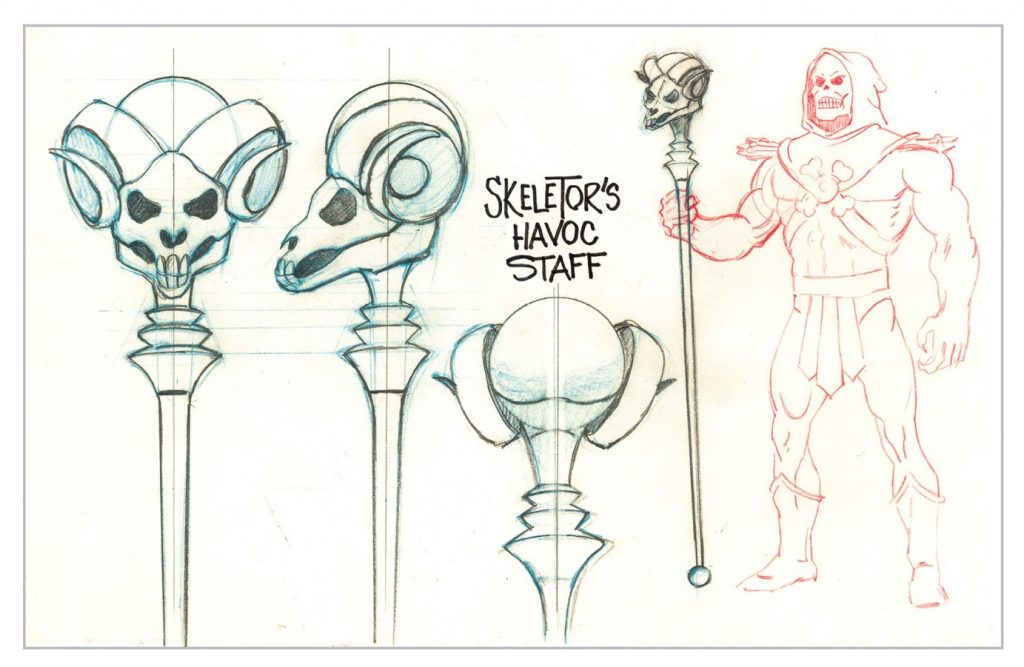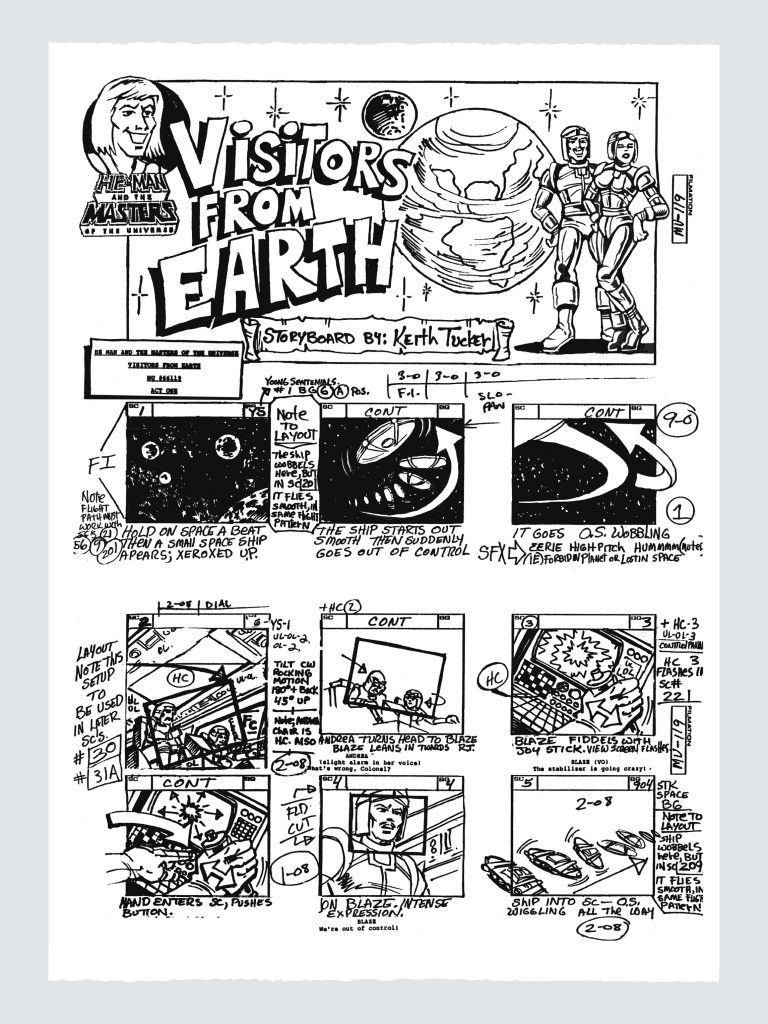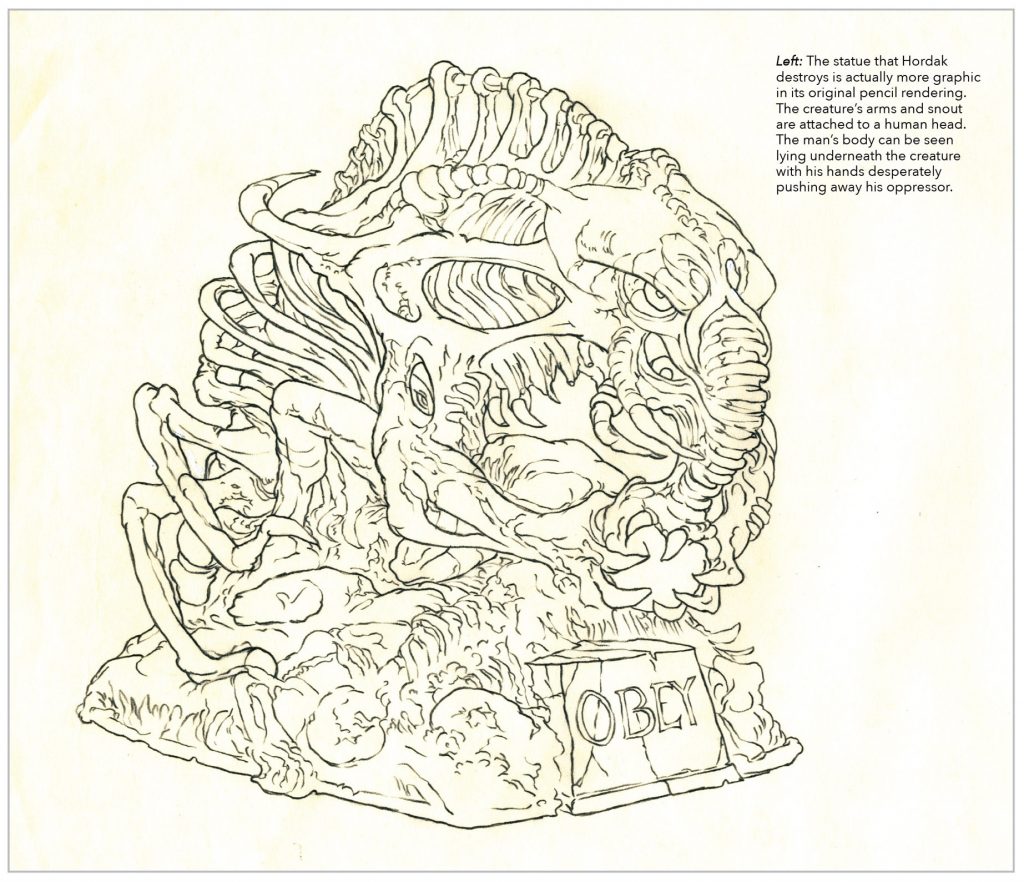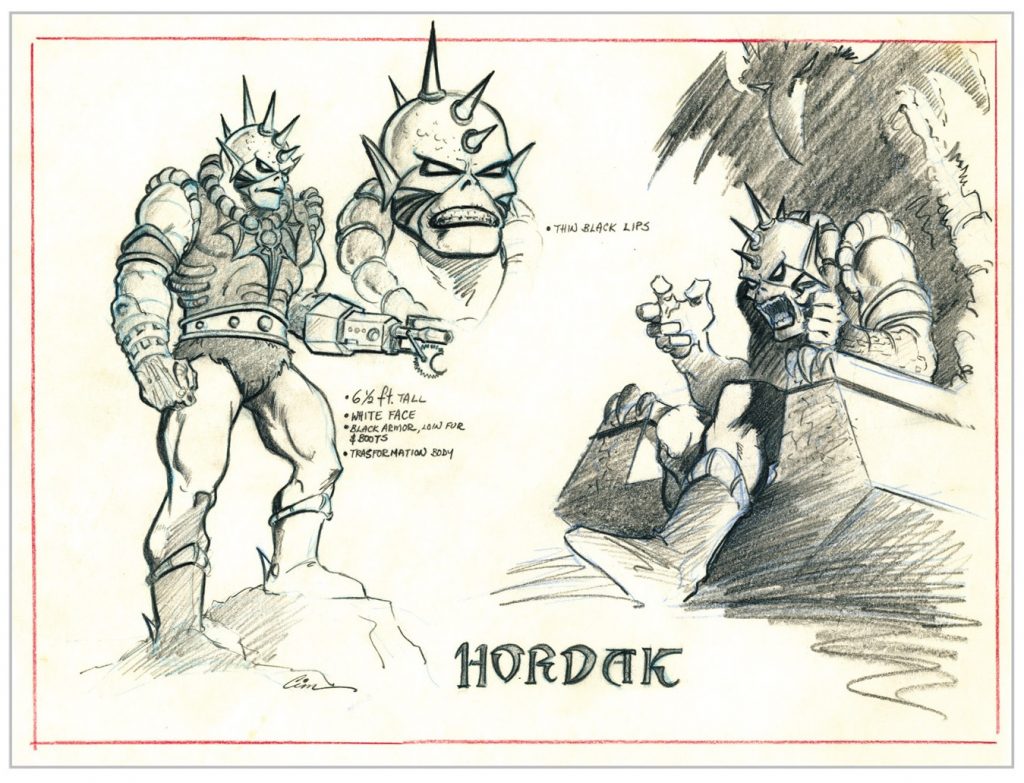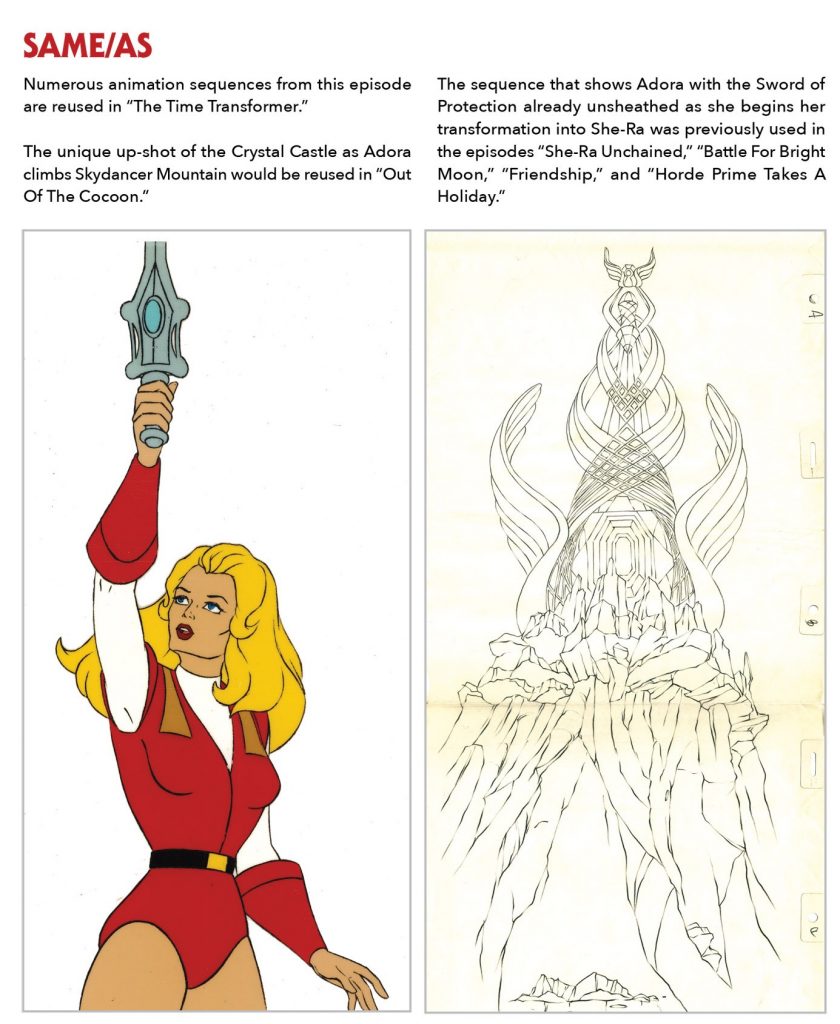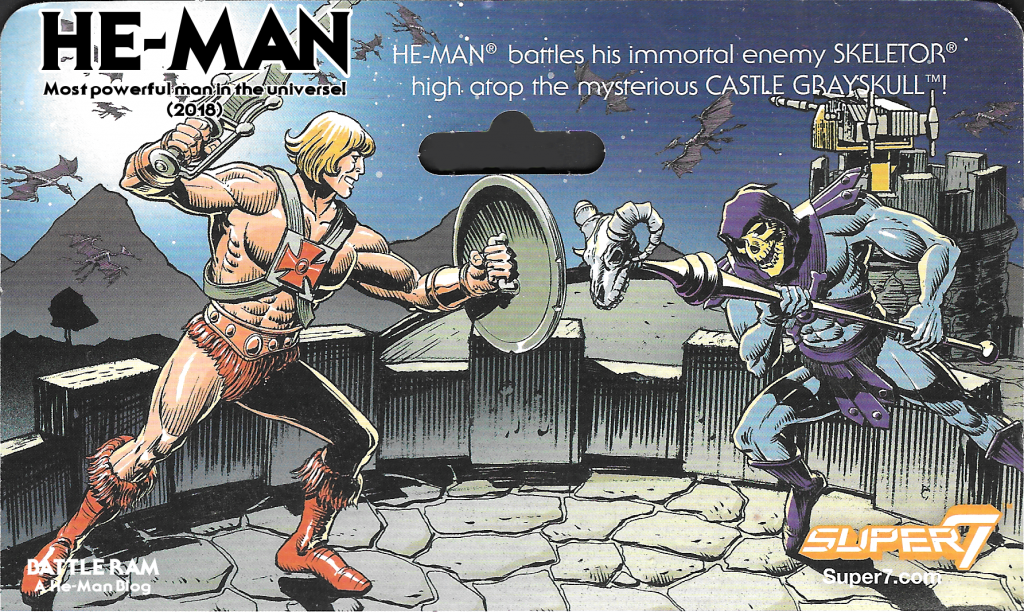
Announced in 2017, Super7’s vintage style, 5.5″ Filmation inspired He-Man figure was released in 2018 along with similar versions of Skeletor, She-Ra and Hordak. The design ethos seems to be based on the following premise: what if, in the 1980s, Mattel released a series of He-Man variant figures that were “as seen on TV”? That’s pretty much exactly what we get with this series, including the occasional design shortcuts that Mattel might plausibly have implemented in the 80s.
Design & Development
Within the packaging for He-Man we get a brief write-up of the history of how He-Man’s design was translated from toy to cartoon:
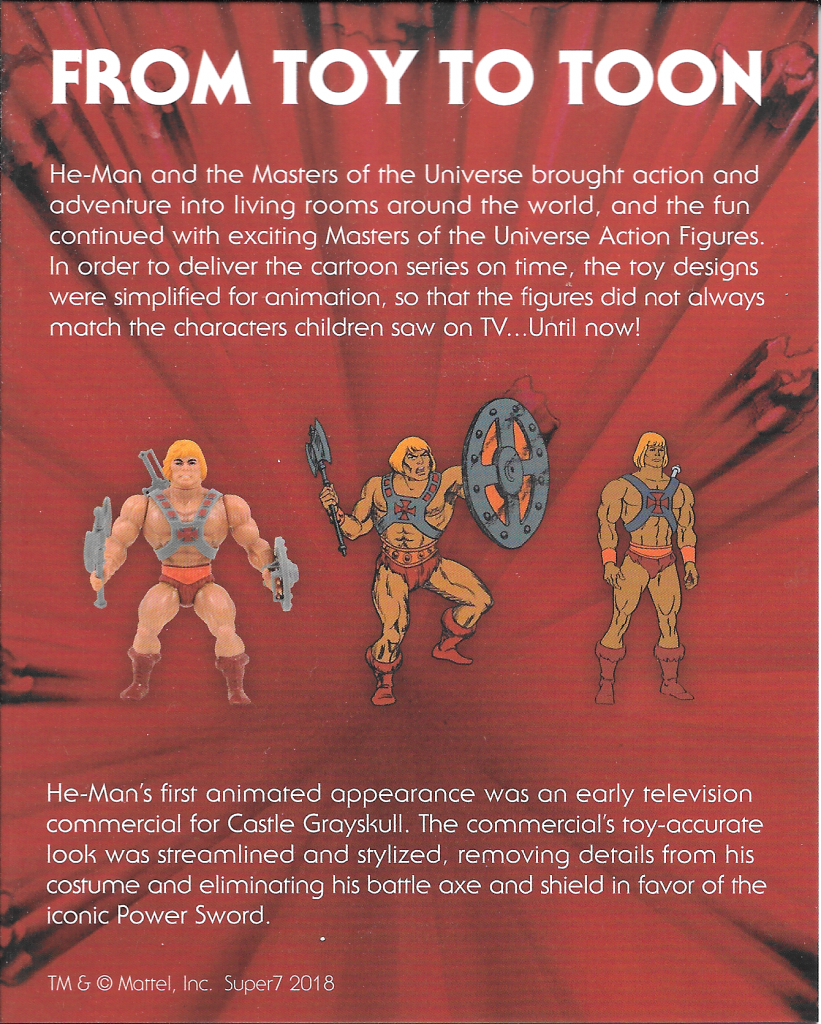
In the above sheet (put together by The Power and The Honor Foundation), we see the vintage He-Man figure, along with the animated commercial version, and a finalized version of He-Man’s animated design.
In He-Man’s first animated appearance (a commercial animated by Filmation Studios to help advertise the toyline), He-Man more or less follows the design of the action figure, including the rectangular details on his harness and the round designs on his belt and bracers. He also carries his axe and sword, which were originally intended to be his primary accessories. The commercial can be viewed in its entirety here: https://www.instagram.com/p/BpmvudrnPlj/
As shown in the card that came with the Super7 He-Man figure, He-Man’s more detailed action figure design was simplified for ease of animation once the animated series was greenlit for development. His primary weapon became his power sword in the series.
The prototype He-Man figure was revealed in February of 2017 at New York Toy Fair. It’s pretty close to the mass produced figure, although his colors are a bit different, and the hair separation is better on the prototype. He also has a nice matte finish throughout.

An early factory sample with some quality control issues was also shown a bit later along in the process. The red paint is flaking off of the harness, which seems to have been made from some sparkling metallic plastic material. This issue would be corrected on the final figure.
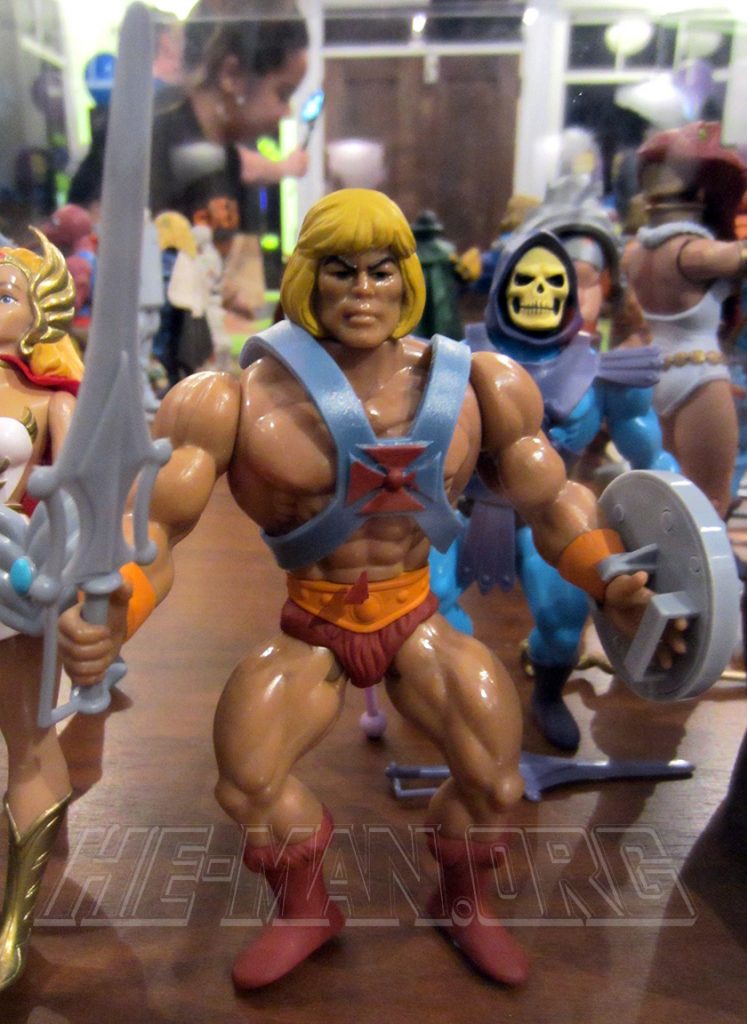
Production Figure
Design-wise, the sculpt of the chest and pelvis seem to be taken directly from the vintage 1982 figure. The arms are based on the vintage figure as well, but the bracers have been made symmetrical and their design simplified. The feet have been changed, removing all the wrap detail from the original boot design.
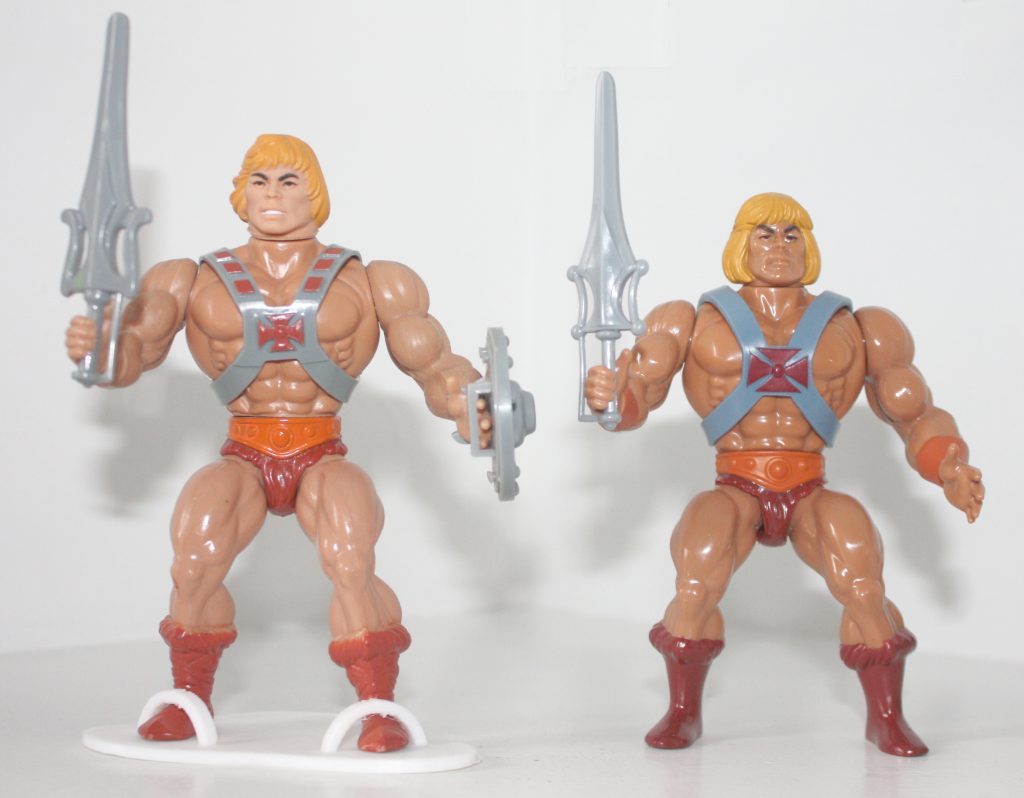
He-Man has the same spring-loaded power punch feature of the 1982 original. The figure comes with a cartoon style power sword, as well as a shield (used rarely by Prince Adam in the cartoon) and a half sword that fits with the corresponding Skeletor half sword. Incidentally, He-Man was depicted with the shield in Filmation’s promotional materials, and the half sword almost made it into the show:

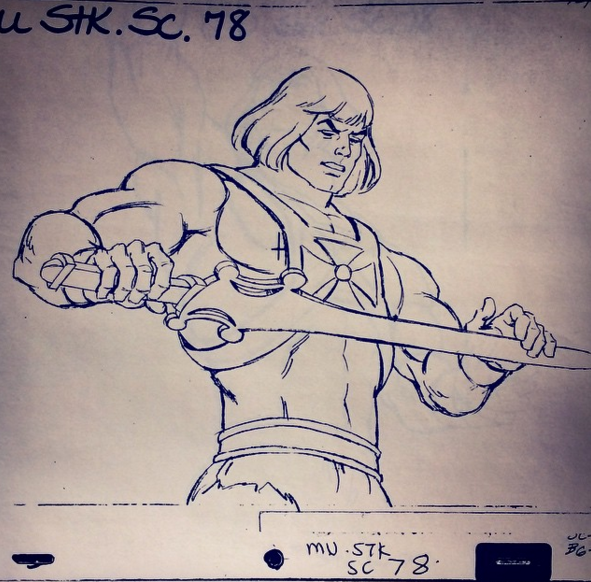
The figure’s harness unfortunately doesn’t fit very well around the back, and sits a bit low. It can be made to sit more or less correctly, but requires some finessing. Also, the figure is extremely glossy. I was able to coat the figure with Vallejo Matt Varnish to somewhat reduce the glossiness:

Before 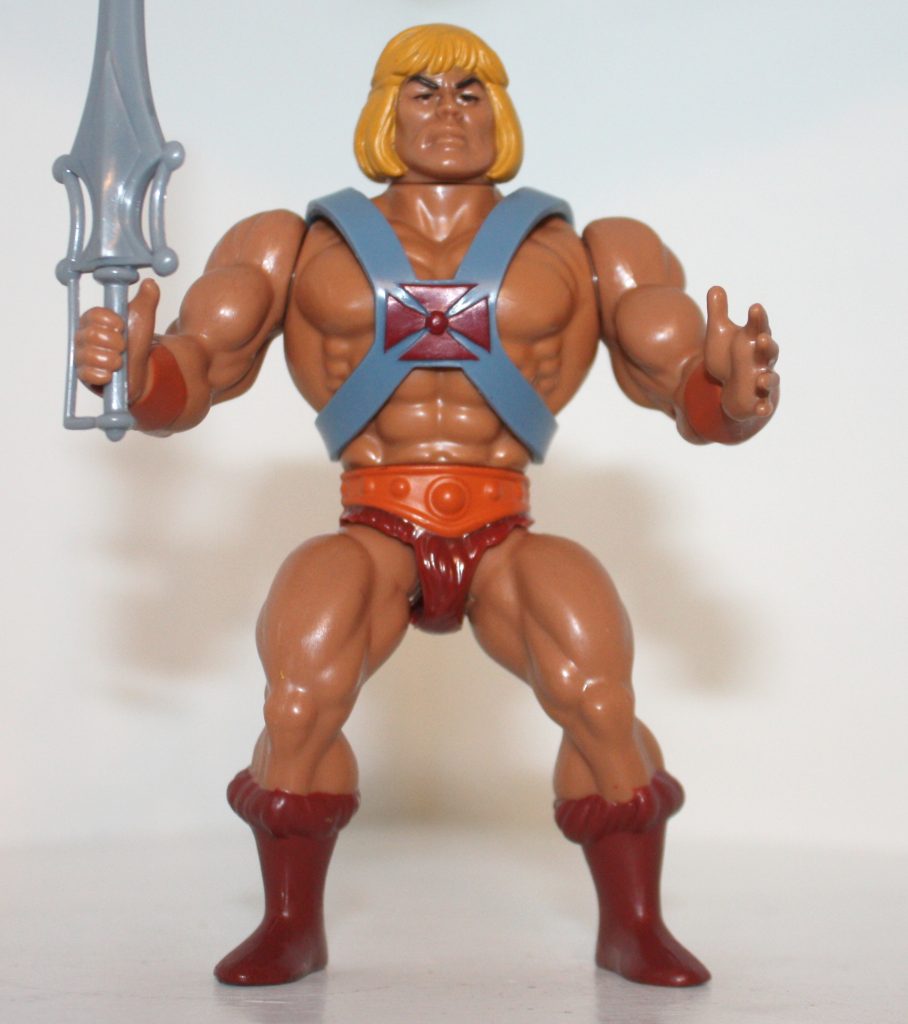
After
Packaging
The design of the packaging was directed by The Power and the Honor Foundation. The main carded version (which was actually released second) is based on the original 1980s design, with an “AS SEEN ON TV” burst which, although not featured on vintage MOTU packaging, was pretty commercially ubiquitous at one point. The shape of the bubble on the front has been altered compared to the vintage packaging.
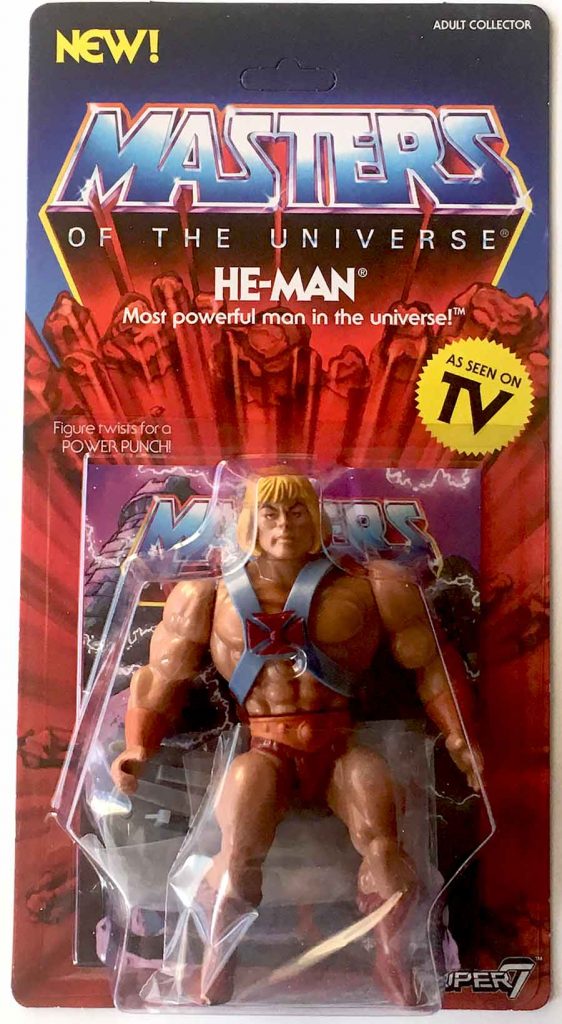
The main artwork on the back was done by Errol McCarthy, who worked on cardback art for most of the vintage MOTU figures. The Filmation-style cross sell artwork and the insert were illustrated by Emiliano Santalucia:
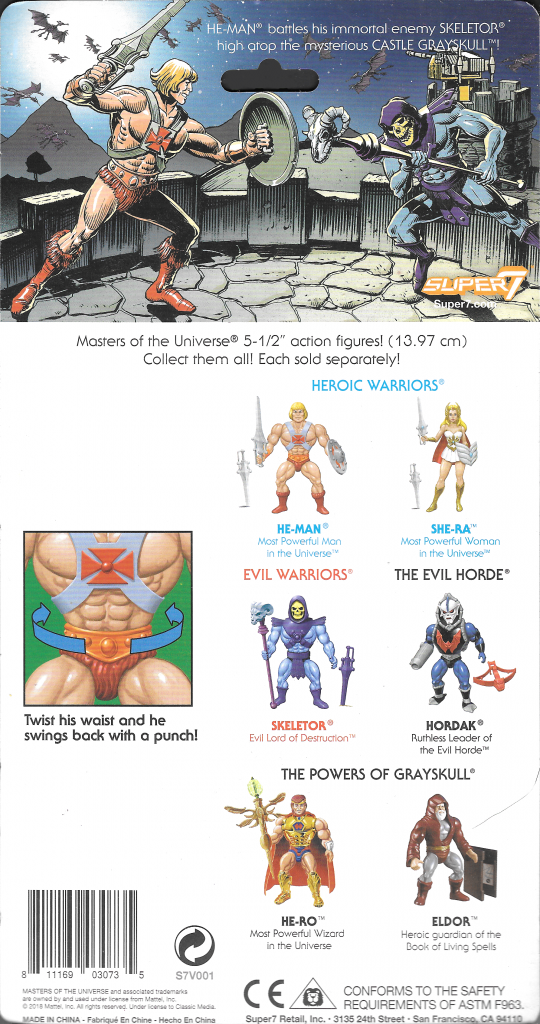
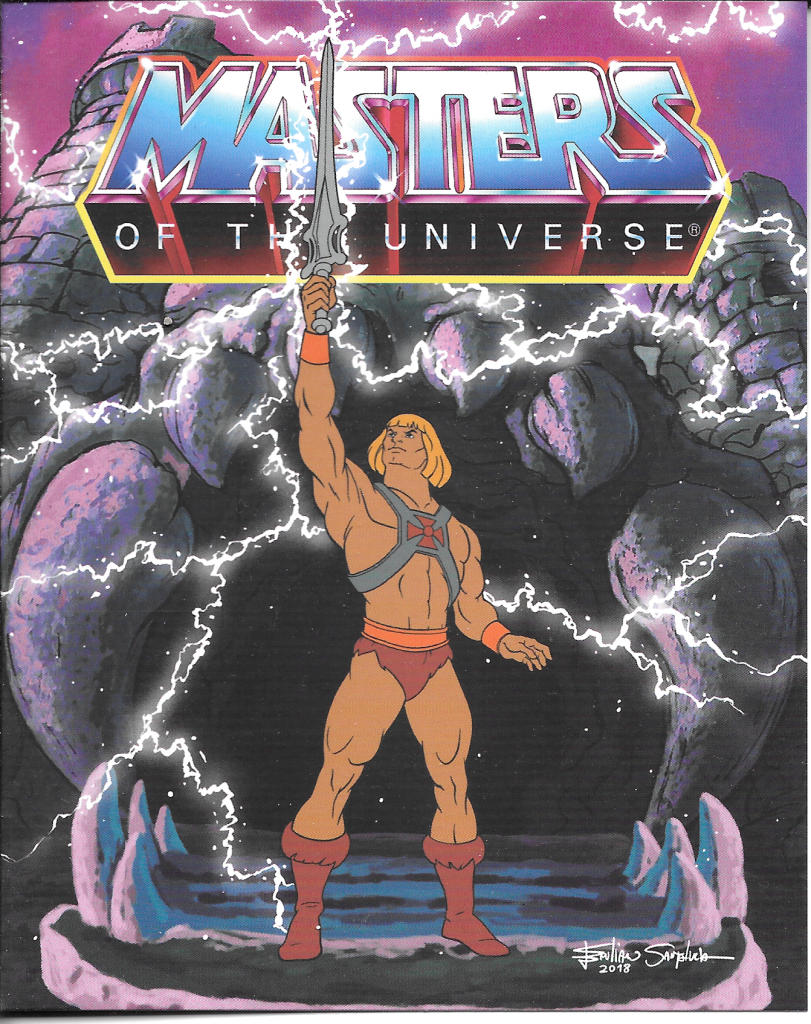
The first version to be released was actually a two pack, in the style of some of the vintage figure gift sets. This set was released in limited numbers.
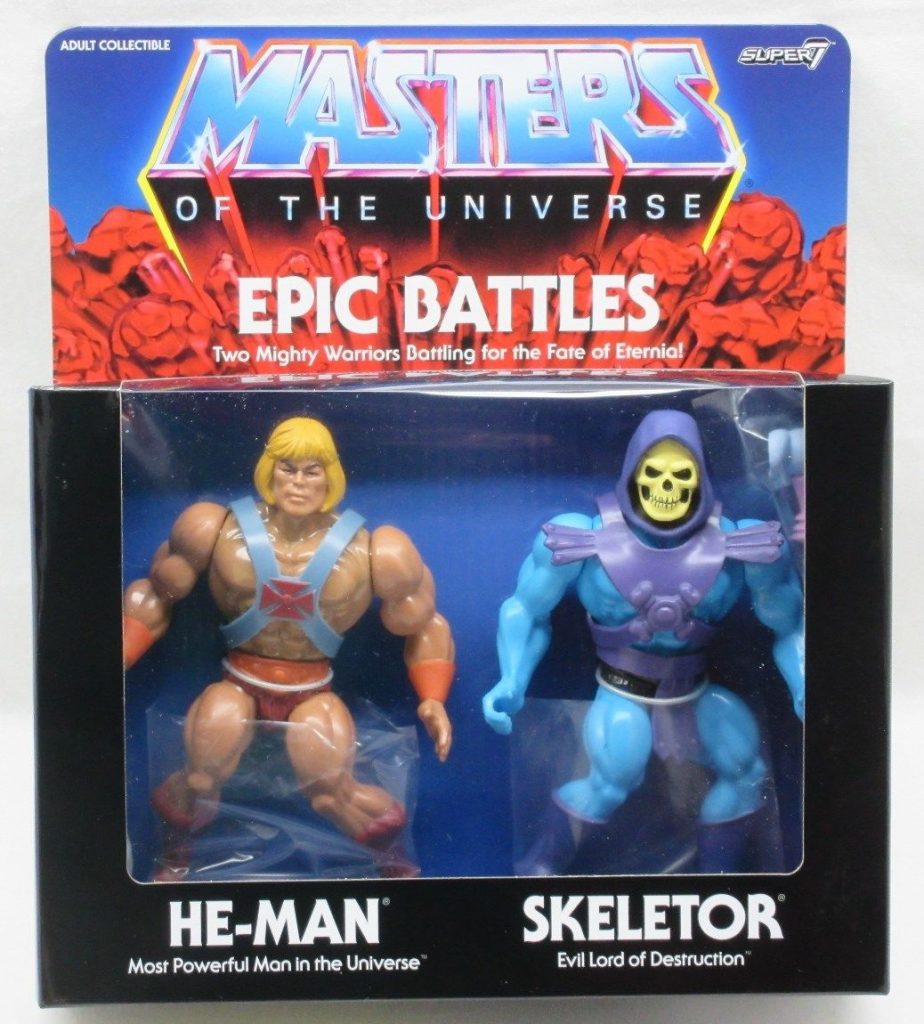
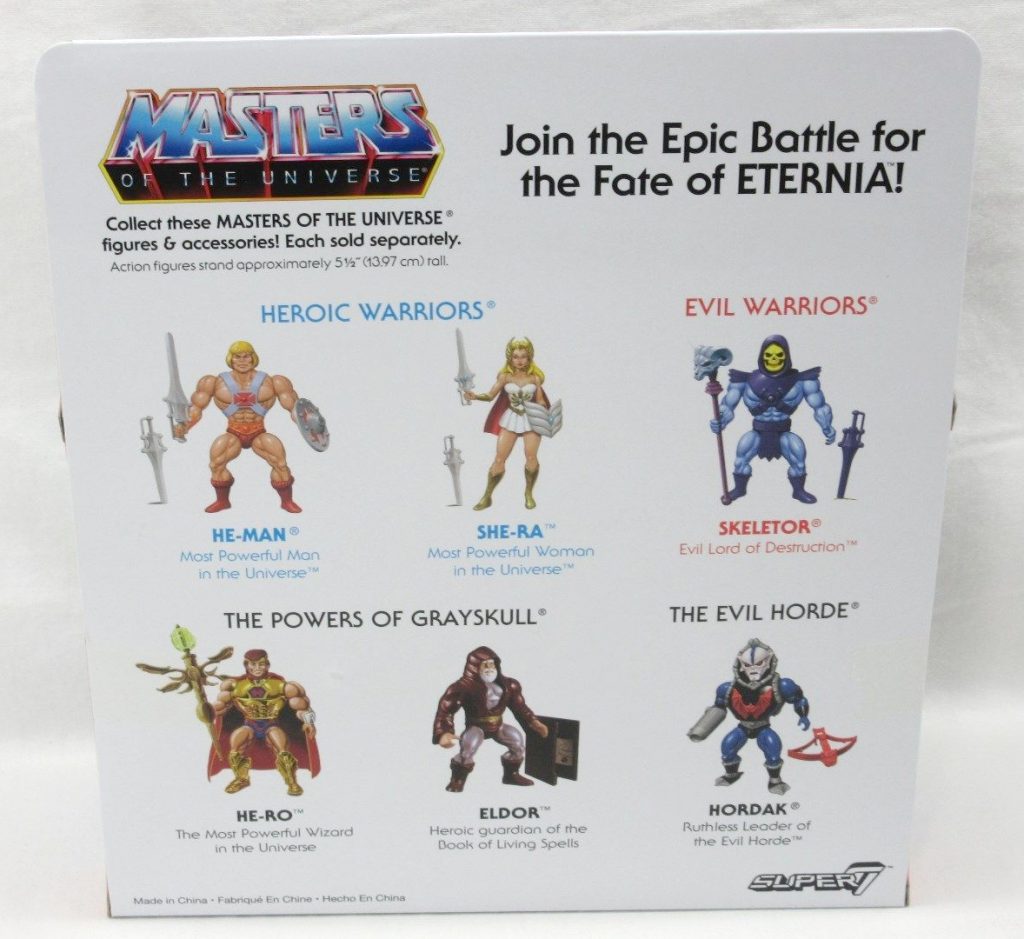
Another limited release of the figure came in the form of a “Los Amos” package, based on the design of vintage “Los Amos” (Mexico) figures:

Yet another version will also be released in the style of the Japanese Takara packaging:
